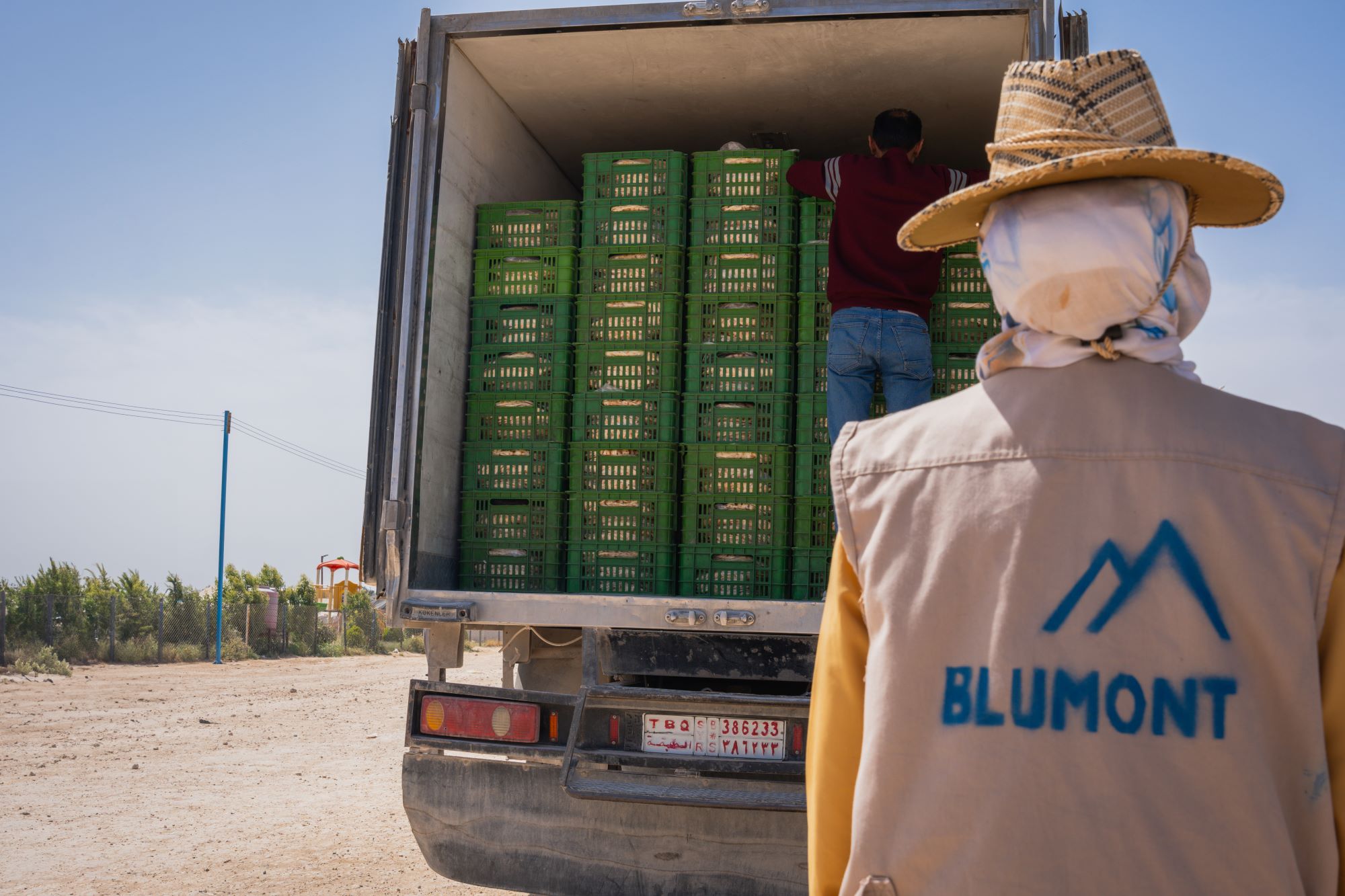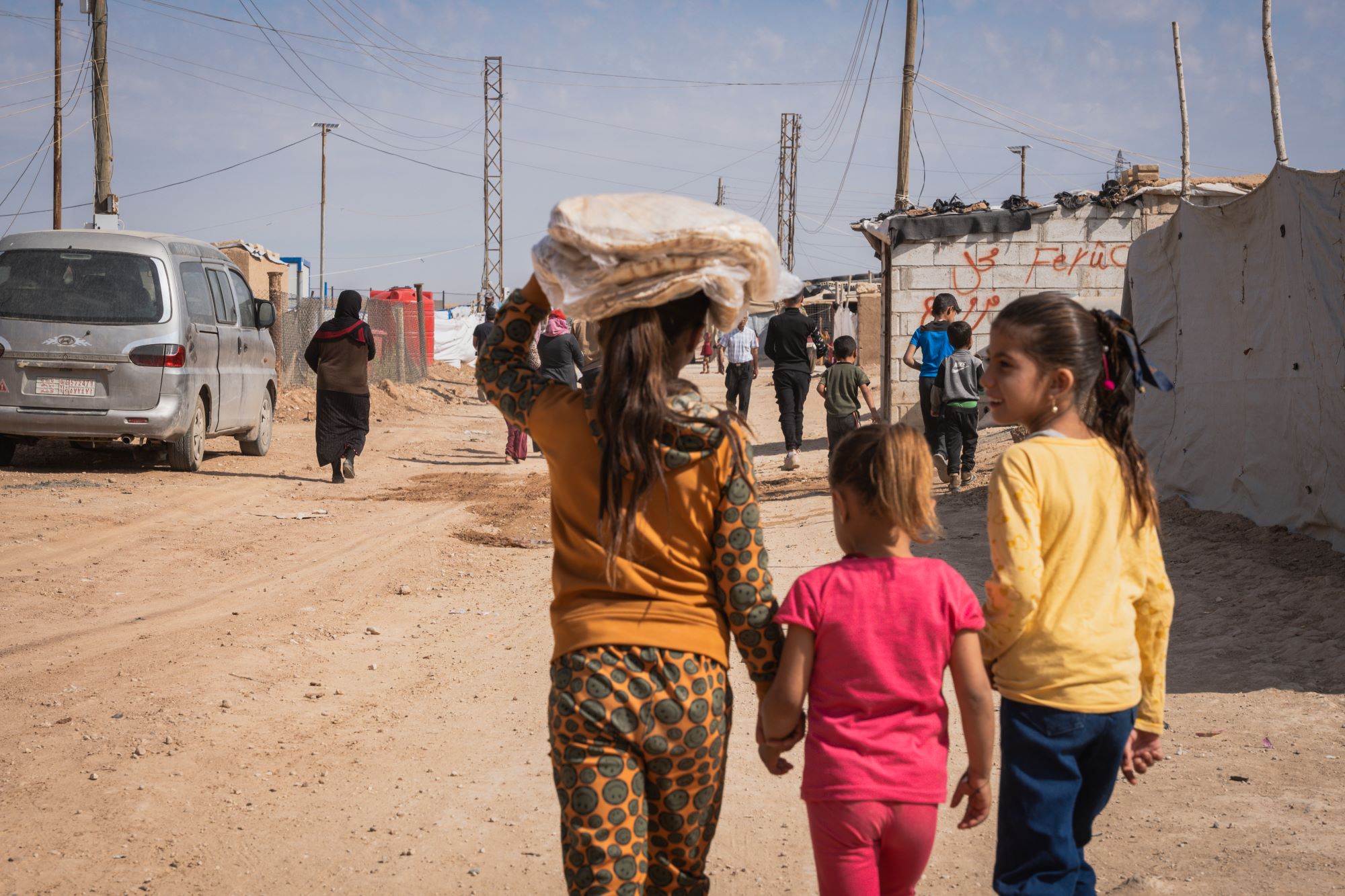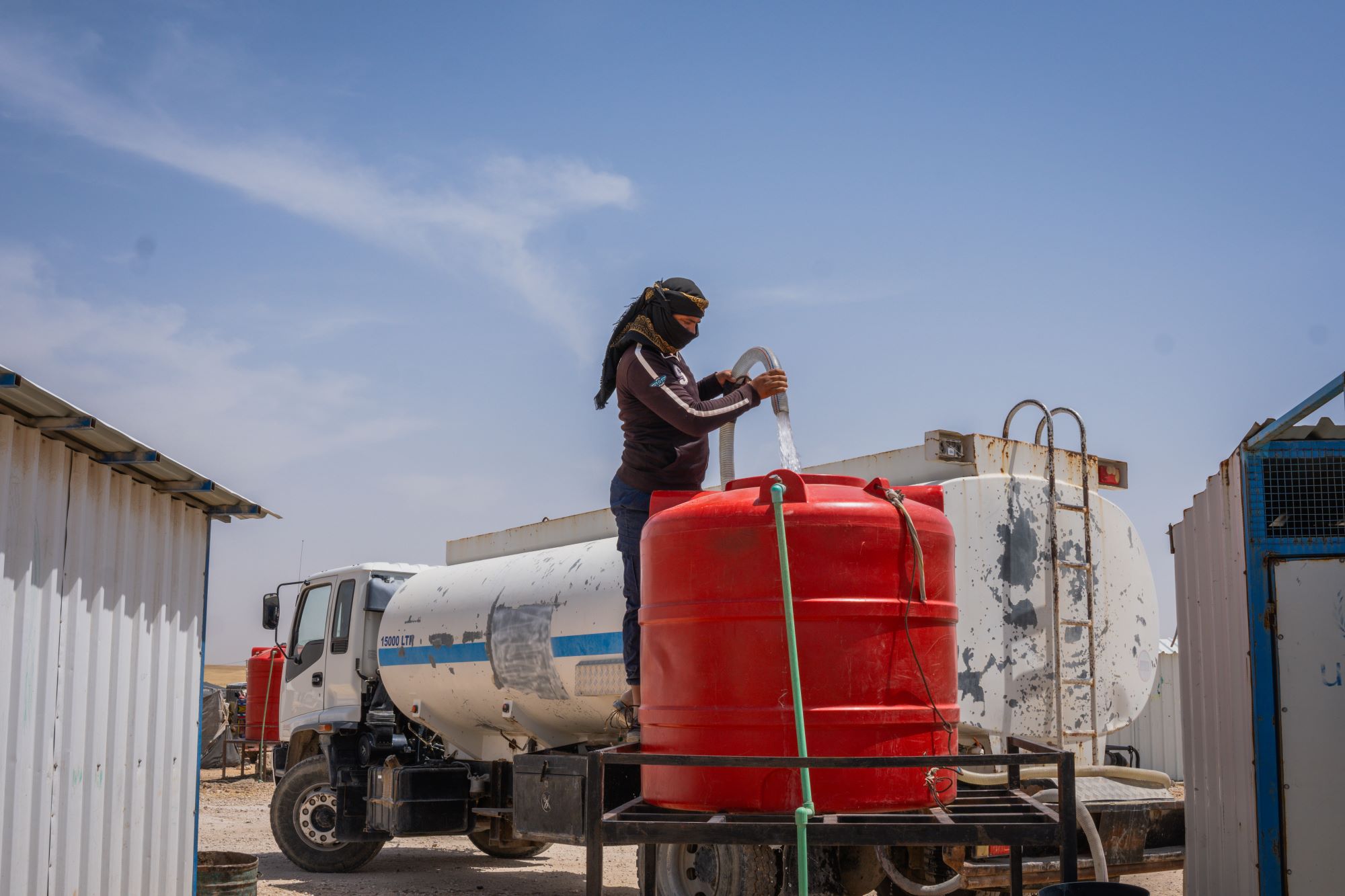This article was written by Aram Hakim, the communications specialist for the SAFER program in northeast Syria, for World Humanitarian Day. Our theme this year for World Humanitarian Day is “Make Humanitarian Assistance Possible.”
The sun beats down as a minivan rattles along a dusty road to a displacement camp in northeast Syria. Sheren*, a local humanitarian worker, sat in the vehicle. Her daily work on the Shelter and Food Emergency Response (SAFER) program tells a story of resilience amidst war.
The Syrian conflict, now in its 13th year, has left an indelible mark on the nation’s landscape and its people. UN OCHA reported that, in 2024, over 16.7 million Syrians need help in the areas of health, nutrition, protection, education, livelihoods, WASH, shelter, and other basic needs. Of them, 5.5 million are internally displaced.[1]

Daily, the SAFER team distributes fresh bread to thousands of families living in camps and informal settlements in the region.
The SAFER program aims to increase life-saving humanitarian assistance to conflict-affected communities in Al-Hasakeh and Ar-Raqqa governorates. Sheren and the team coordinate and manage everything from the distribution of basic supplies residents need, to maintaining the lights and water on the premises, to providing trauma support, while also contributing to household-level food security for camp populations and informal settlements.
“Another day, another challenge,” Sheren said, wiping sweat from her brow. Her optimism is striking, given the stark realities of life here. Back in Al-Hasakeh, her hometown, electricity is a luxury, and getting clean water is a daily struggle. Yet for Sheren, these challenges feel less daunting compared to those faced by residents in the camp she serves.

Fresh bread, protection, shelter, and community engagement are among the services our team provides in displacement camps.
As she arrived at the camp that day, Sheren sprang into action. She moved with purpose, coordinating bread distributions as part of the SAFER program, which distributes fresh bread to more than 121,000 people across the northeast Syria camps and informal settlements each day. Her everyday duties include ensuring flour arrives at bakeries that partner with SAFER and getting the baked loaves delivered to thousands of families.
“See that family there?” Sheren said, nodding towards a group huddled in the shade of one of the tents. “Last week, they arrived at the camp. Today, they have shelter and fresh bread. It’s a small dignity, but it matters.”
Sheren’s work, like that of many aid workers in Syria, comes at great personal risk. Syria is third in the world for attacks on humanitarian workers. The Aid Worker Security Database recorded 140 cases from 2019 to 2023.[2]
These aren’t just statistics – they’re colleagues lost, friends injured, lives forever changed.
“We all know the risks,” Sheren said. “But what choice do we have? These people need us.”
As the day came to a close, Sheren prepared for the journey back to Al-Hasakeh. Security concerns emerged, prompting a swift response along the planned route. Shaida retrieved her phone, made several calls, and evaluated available road choices all so that her teammates could arrive home safely.
“It’s part of the job,” she stated, plotting a new course. “You adapt, you overcome. Tomorrow is another day, another chance to help.”

SAFER-managed camps provide shelter and services for some of the 5.5 million internally displaced people in Syria.
As the team van finally pulled into Al-Hasakeh, the streets dark and quiet, Sheren turned to her colleagues with a tired but genuine smile. “See you tomorrow?” she asked, though it was a rhetorical question. For Sheren, tomorrow is a chance to make a difference for millions in need across Syria.
On this World Humanitarian Day, Sheren and our other colleagues remind us that behind the support and statistics are brave, dedicated individuals. They make humanitarian assistance possible for millions in need.
*Name changed for security purposes.
[1] UN OCHA – Syria Humanitarian Needs Overview 2024.
https://www.unocha.org/publications/report/syrian-arab-republic/syrian-arab-republic-2024-humanitarian-needs-overview-december-2023
[2] https://www.aidworkersecurity.org/incidents/report/contexts




